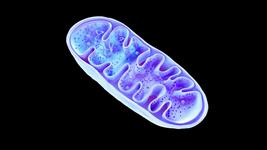Calm Before the Storm: Recent Progress in AAV Delivery for CRISPR Therapies

Nicole Paulk is a gene therapy expert and a pioneer in the field of adeno-associated viral vectors (AAVs). CMN spoke with Paulk in 2021 about the future of AAV-delivered gene therapy, covering the most pressing issues in the AAV field, and the most exciting new research at that time. More than two years later, we checked in with Paulk to see how things have progressed.
More FDA approvals, shorter wait times
One of the biggest advancements in the broader AAV field in the last few years has been the FDA approval of several AAV-based gene therapies. When we last spoke to Paulk, there were only two: Luxterna, which treats inherited retinal dystrophy by delivering a functional copy of the RPE65 gene in an AAV2 vector, and Zolgensma, which treats spinal muscular atrophy type I by delivering the SMN1 gene in AAV9.
Since then, the FDA has approved two additional AAV-based gene therapies: Hemgenix, which delivers a functional copy of the F9 gene to patients with haemophilia B using a liver-directed AAV5 vector; and Roctavian, which delivers a functional copy of the F8 gene with AAV5 to patients with haemophilia A. Of course, none of these are CRISPR-based therapies; each delivers a functional copy of the missing or mutated gene. Now, Paulk says that we’re seeing a significant increase in gene-editing therapies, rather than only gene replacement gene therapies, with multiple planned and ongoing clinical trials for these new biologics.
»Assuming the greater economic market improves, we're going to be on the steep part of that curve where [gene-editing AAV therapies] are absolutely exploding. It will go from one approval every couple of years, to where we will reach that hype moment that we talked about several years ago that got delayed because of COVID, and you will see handfuls to then dozens of approvals per year,« Paulk explained.
The other big advance on the scientific front is the elimination of major bottlenecks in the production of AAVs, which means accelerated clinical development times for these therapies.
»We continue to keep increasing production yields and improving manufacturing capacity so that we no longer have these 2-3 year queues for all of the big contract development and manufacturing organisations. It's down to about a year or less, which is much more reasonable from a timeline perspective for a company to feasibly get a Good Manufacturing Practice lot in for their first small Phase 1 trial,« Paulk said.
Engineered capsids for tissue tropism
Engineered AAV capsids are important for targeting specific tissues or organs, and more specifically, avoiding organs that you don’t want to target, such as the liver; liver toxicity is a common issue in AAV therapy. Paulk says that there have been huge leaps on this front. Previously, labs would produce different engineered capsids in the hopes that they would be used therapeutically. Now, finally, sponsors of gene therapies are starting to license these capsids from these capsid engineering companies and academic labs, queueing up production and putting them into the clinic.
»The newest, newest, newest generation of engineered capsids just continue to keep getting better and better, and more and more targeted. They’re able to be produced at higher yields, and can be liver de-targeted with immune stealth, and all of these various things that we're all really interested in,« Paulk said. »With these advancements we can hopefully start to use lower and lower doses and get even more precise delivery.«
The vast majority of AAV gene therapy clinical trials are targeting what Paulk refers to as the four ‘darling’ tissues that are low-hanging fruit: brain, eye, liver, and skeletal muscle. Progress in engineered capsids means that AAVs can now target other different tissues beyond these four, or do things like cross the blood brain barrier (BBB) and deliver CRISPR components to specific cell types and sub-populations in a tissue such as the brain.
»We’ve now got all this specificity. Do you want to target every single cell type? That might be useful if you're going after something like Alzheimer's, where multiple cell types are involved. But if you're going after something that's very specific, it's only neural, or it's only in oligodendrocytes - we've got all of these different capsids to pick from now that can do this. So that's a huge boon, because that gives you that specificity on the delivery side,« Paulk remarked.
For those wondering if lipid nanoparticles (LNPs) would be better candidates for targeting specific tissues or organs, Paulk said it’s unlikely at the moment: »Outside of targeting the liver, it is still AAVs, and will continue to be for many years. LNP’s have got nothing on them.«
Lowering doses and eliminating neutralising antibodies
One of the key issues affecting AAV dosages is the number of empty capsids present in a batch. The empty capsids will still elicit an immune response, potentially contributing to toxicity issues and affecting the total dose administered.
While it’s not front-page news, there has been a big push in the last few years to minimise the percentage of empty capsids. The process is not glamorous, she said, but requires stepwise, incremental development improvements that add up, year by year:
»Normally, folks don't go out and present this stuff at big medical conferences, but you're starting to see more groups put out their numbers. And when you get enough social pressure from companies who are putting in the time, money and effort - because it does take time, money and effort to do this, this is not free - once you've done it, and you've got a beautiful vector and it's ~96% full, you want to go out and tell the world about it, you want to scream from the rooftops!«
Another key area of AAV research we discussed back in 2021 was the use of bacterial enzymes to eliminate pre-existing neutralising antibodies for AAVs that often prevent patients from being able to be treated with any AAV-based therapy. Now, Paulk says several different companies have developed or licensed these enzymes to cleave AAV-specific IgGs.
»At the most recent [ASGCT] meeting, I saw several talks from groups doing the late-stage animal work with those enzymes. We're single digit years away from seeing one of those in the clinic. I’m very interested to see how that how that turns out,« Paulk commented.
Siren Biotechnology: Creating a universal AAV gene therapy for cancer
Paulk’s new company, Siren Biotechnology, has a lofty goal: to create both the world’s first universal AAV gene therapy and the world’s first AAV gene therapy for cancer. As CEO, Founder, and President, Paulk says the irony is that she never intended to work on cancer. The idea came from initial brainstorming sessions in which Paulk and her team considered the biggest problems in the gene therapy field.
Put simply, every current gene therapy is bespoke and personalised for a single indication. Even for companies that specialise in a particular disease area - musculoskeletal disorders, for example - there’s a limited amount of knowledge that can be leveraged from any one therapy to develop new programmes because often each programme is started from scratch with entirely different components, requiring enormous amounts of time, money, and effort.
»We thought, what if we asked a fairly audacious question: could you make a universal gene therapy? Could you make one gene therapy that could be used to treat more than one indication? Whether that's 2, 200, or 2,000 indications? Can you make it once, and then use it 10 ways to Sunday in all these different indications?« Paulk said. »We weren't even thinking about oncology. We were just thinking very broadly about this conceptual advance.«
As we’ve said before, Paulk is an innovator, and isn’t afraid of a challenge. When she speaks about the company, or the broader AAV gene therapy field, it’s with infectious enthusiasm and confidence. In a recent talk at the All-In Summit 2023, Paulk said Siren chose to target brain cancer because it was one of the most challenging indications.
Siren has coined its modality “immuno-gene therapy”, combining two transformative therapeutic technologies – AAV gene therapy and cytokine immunotherapy – into a single, reimagined modality. With positive results from 3 different orthogonal in vivo models, the company hope to begin its first clinical trial for brain cancer in 2025.
The future of AAV-delivered gene therapy is certainly looking bright from Paulk’s perspective, and she insists we’ll see the real potential of these delivery vehicles in the coming years. In Paulk’s own words, this is »…the last stretch of a calm before the storm.«
Rebecca Roberts is a molecular biologist and science writer/communicator based in Queensland, Australia.
To get more CRISPR Medicine News delivered to your inbox, sign up to the free weekly CMN Newsletter here.
Tags
ArticleInterviewNewsDeliveryViralAdeno-associated virus (AAV)
CLINICAL TRIALS
Sponsors:
Suzhou Maximum Bio-tech Co., Ltd.
Sponsors:
Zhejiang University







